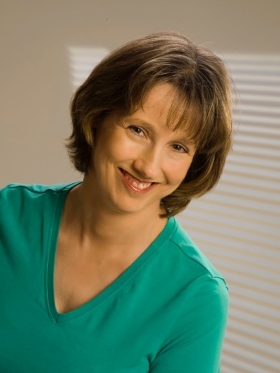Approaching CPD as Continuing PERSONAL Professional Development (CPPD) by Sue Young
123rf.com (c) David Hughes: woman sitting on bench looking out to sea sunset sky
Most recognised approaches to CPD in established professional bodies is recorded as hours doing activities such as attending seminars, courses, undertaking qualifications and other ‘classroom’ derived learning activities. It is reduced it to a description of activities, often a 'tick the box' exercise, that is input or content driven, rather than outcome driven.
This can be a very proper approach when the relationship between input, and the output that happens as a result is clearly understood.
In Coaching, outcomes are more open than can be simply predicted. The outcome for the Client, or Coachee, is often highly personal – and special to them, and their circumstances. For example, Leadership is often highly personal where the person is the main instrument involved in how leadership is exercised. Coaching is highly relational where the dynamics as they play out between coach and client, are central to the quality of the Client’s experience and thinking.
How coaches develop their approach and ‘model of practice’ is also unique to them as individuals. In recognition of this reality, we need to bring the word ‘Personal’ into CPD; so on-going development is known as ‘Continuing Personal and Professional Development’.
So, how can we best keep our learning personal, and which works as an instrument of learning for our clients?
My personal research always shows that the methods that came out the most highly rated are learning from client work; and learning from interaction with peers. Certainly that resonated for me. In fact the most powerful contributions to my learning as a Coach have combined these two factors.
Taking the example of CPPD from working in a peer group over the last 4 years on a project to share and develop best practice for Team Coaches. A huge amount of learning came from thinking with others about the nature of Team Coaching and the ‘what’ that we were each doing in our Team Coaching. There was a great deal added to the outcome that was down to the diversity of experience in the group and the range of perspectives shared, together with real listening and willingness to commit to all agreeing what was Best Practice. Undoubtedly this quality of peer exchange was probably also the biggest contributory factor in the results we achieved. This massively added to my confidence and articulation around my Team Coaching practice.
The experience felt uncomfortable in places for this Peer team but the resulting review and discussion was of great learning value on a number of levels. It was through a combination of the experience and then reviewing it with peers that we drew out major, and very personal learning points for each member of the team, becoming aware of, and questioning, our own biases and assumptions. The outcome of that learning for the team has been the recognition of the value of testing our Practice with other established Practitioners. For me personally it heightened my awareness of my own assumptions and ego driven tendencies and how they can get in the way.
For me, this experience is a good example of CPPD in practice. It hits several important aspects of CPPD in coaching:
learning about Self,
self-regulation, and
working directly with peers that created a more common approach.
Similarly my experience is, that with a conducive environment where the right level of light structure and tone is struck, and trust is built, open informal exchange, as though between peers, is a rich form of development for experienced people, generally. I have experienced this with my Coachees.
In working with our Executive Coaching clients the same principles apply. We are working with them as peers, even where we are catalysts for their – personal - learning process. This can get deeply personal, in both content covered, as well as the atmosphere during the coaching process.
Coaching is particularly powerful for capable and successful Leaders who are working in increasingly fast paced and complex organisations. In my personal practice an area I have been progressively helping my clients to experiment with finding simple ways to incorporate more ‘thinking’ space into their daily ways of working that works in their particular context.
As with all learning this is a very individual led process that has to work for very different personalities and working styles, who have different natural preferences so I will suggest different approaches accordingly; and work hard to find the sort of creative approach that makes sense for them, personally, in what they are looking for from Coaching.
I have to start to demonstrate to them that I can personally appreciate what they are dealing with, and find ways to introduce ways that the other person personally relates to easily,
What works for one person rarely works for another. It becomes quite personal for me, too! I often consider I need to work with someone as the Coach as though I am also working personally ‘peer to peer ‘ with them. This is the best way to operate in a way that relates more closely, and effectively.
For example, one of my recent clients works as a senior manager in a global business, where the pace of change is highly demanding as one change leads into another, with a major re-structuring of the core business currently moving into a phase of implementation. The climate is one of huge uncertainty.
At the start of our coaching, from our conversation he identified as one of his priority areas to ‘step back and create personal space for myself’. Two areas of focused objectives were firstly to find time for strategic thinking to create a 2 year vision, and secondly to observe himself more in interaction with others. I had to appreciate his preferred approaches for finding space! He was travelling a lot internationally at the time and used a number of devices – ipad, mobile an laptop – a real road warrior! At the time he was very ‘hyper’, gushing out a great deal of information very fast, behaving the stress. So getting him to slow down his pace was the first part of him finding mental ‘space’. I introduced him to the idea of a journalling app that could live on his ipad where he could just ‘download’ or capture his thoughts, particularly when he had time on is hands, waiting in airport lounges. I had primed him in particular to focus on his identified priority of noticing more explicitly his interactions with others – what impact he wanted to have, what he did, observing others response and then reviewing what worked well, and not so well as he had hoped. What would he do differently next time?
I had not spoken to him for about 3 months when we had a recent session. He told me, as well as sounded, he was now so much more relaxed and confident, reporting himself as ‘calmer’. He reported being a lot more consciously aware and was taking his ‘thinking time’ out more confidently. What came across to me was that, although the challenges of his role are still huge, he knows more where he’s at with it, sees it going in the right overall direction, knows the issues requiring attention, and knows that there are going to be setbacks, but is comfortable with handling them as they occur.
What I have taken from my work is it’s affirmed the value to me of continuing to refine my approach to helping my clients through this more personal, peer-to-peer approach to stimulating reflection into their daily ways of working as leaders.
So, for me CPPD is at the heart of what we bring to Leaders as well as central to our practice. Peer interaction is a very powerful form of development for experienced Coaches, both with our clients as professional Peers and fellow Coaches. Taking the time to consider what have been our most powerful experiences as Coaches, and what we have taken from that into our practice is a better starting point for me, rather than the more mechanistic and removed approach frequently taken to CPPD.
To contact Sue Young for more details:












